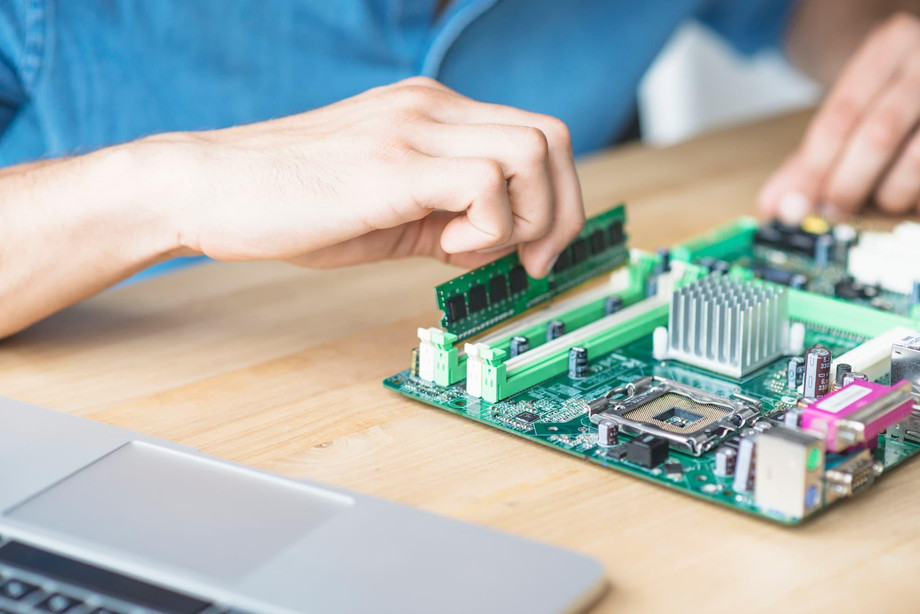The landscape of robotics is evolving at an unprecedented pace, driven by advancements in embedded systems that enable autonomous functionalities. In recent years, autonomous robotics has emerged as a pivotal technology across various sectors, including manufacturing, agriculture, healthcare, and logistics. This blog delves into the intricacies of embedded system development specifically tailored for autonomous robotics, highlighting innovative strategies, best practices, and future trends.
Understanding Embedded Systems in Robotics
Embedded systems are specialized computing devices designed to perform dedicated functions within a larger mechanical or electrical system. In robotics, these systems serve as the brains that control movement, decision-making, and communication with other devices. An embedded system typically consists of a microcontroller or microprocessor, memory, input/output interfaces, and software tailored for specific applications.
In autonomous robotics, embedded systems play a crucial role by providing real-time processing capabilities, enabling robots to respond swiftly to environmental changes and execute complex tasks. The integration of sensors, actuators, and advanced algorithms allows these systems to process data and make informed decisions autonomously.
Key Components of Autonomous Robotics
1. Sensors
Sensors are integral to any autonomous robot, providing vital information about the environment. Common sensors include:
- LIDAR: For mapping and navigation, providing high-resolution distance measurements.
- Cameras: Used for image recognition, obstacle detection, and environmental understanding.
- IMUs (Inertial Measurement Units): For tracking orientation and acceleration, crucial for stable navigation.
2. Actuators
Actuators convert electrical signals from the embedded system into physical movement. They are essential for executing commands, allowing the robot to interact with its surroundings. Types of actuators include:
- Servos: For precise control of angular or linear position.
- Motors: For driving wheels or other mechanisms, providing the necessary force for movement.
3. Microcontrollers and Processors
The choice of microcontroller or processor significantly impacts the performance of an embedded system. Factors to consider include:
- Processing Power: Determines the system's ability to handle complex computations and multitasking.
- Energy Efficiency: Critical for battery-powered robots, ensuring longer operational periods.
- Real-Time Capabilities: Essential for applications requiring immediate responses to environmental changes.
4. Communication Interfaces
For autonomous robots to function effectively, they must communicate with other devices and systems. Common communication protocols include:
- CAN (Controller Area Network): Widely used in automotive applications and industrial automation.
- Wi-Fi and Bluetooth: For wireless communication, enabling remote control and data transfer.
Development Process for Embedded Systems in Robotics
1. Requirement Analysis
The first step in developing an embedded system for autonomous robotics is understanding the requirements. This involves defining the robot's objectives, operational environment, and performance criteria. Stakeholders, including engineers and end-users, should collaborate to ensure all aspects are considered.
2. System Design
Once requirements are established, the next phase is system design. This includes selecting appropriate hardware components, such as sensors, processors, and actuators, as well as designing the software architecture. Effective design should prioritize modularity, allowing for easy upgrades and maintenance.
3. Prototyping
Building a prototype is crucial for testing and refining the embedded system. This phase involves creating a functional model that can be evaluated in real-world scenarios. Prototyping allows developers to identify potential issues early and make necessary adjustments.
4. Testing and Validation
Thorough testing is essential to ensure the system meets performance expectations and operates safely. This includes:
- Functional Testing: Verifying that each component works as intended.
- Integration Testing: Ensuring all system parts operate cohesively.
- Field Testing: Evaluating performance in actual operating conditions to assess reliability and efficiency.
5. Deployment and Maintenance
Once testing is complete, the embedded system can be deployed in the field. Ongoing maintenance is vital to address any emerging issues, optimize performance, and implement updates as technology advances.
Emerging Trends in Autonomous Robotics
1. Artificial Intelligence and Machine Learning
The integration of AI and machine learning algorithms into embedded systems is transforming autonomous robotics. These technologies enhance decision-making capabilities, allowing robots to learn from experiences and adapt to new situations.
2. Edge Computing
Edge computing involves processing data closer to the source rather than relying on centralized cloud servers. This trend reduces latency and bandwidth usage, enabling real-time data analysis and quicker responses in autonomous robots.
3. Collaborative Robotics
Collaborative robots, or cobots, are designed to work alongside humans. The development of embedded systems for cobots focuses on safety, ease of use, and intuitive interaction, expanding their applicability across various industries.
4. Swarm Robotics
Inspired by natural systems, swarm robotics involves multiple robots working together to accomplish tasks. Embedded systems in swarm robotics must facilitate communication and coordination among robots, allowing for efficient and dynamic problem-solving.
Conclusion
The development of embedded systems for autonomous robotics is at the forefront of technological innovation. As industries continue to embrace automation, the demand for cutting-edge embedded solutions will only grow. By focusing on key components, adopting a structured development process, and keeping pace with emerging trends, engineers and developers can create autonomous robots that enhance productivity, efficiency, and safety across various applications.
Investing in advanced embedded system development not only propels the robotics industry forward but also positions organizations to harness the full potential of automation, paving the way for a future where robots seamlessly integrate into our daily lives and work environments.
To Know More About embedded system development

